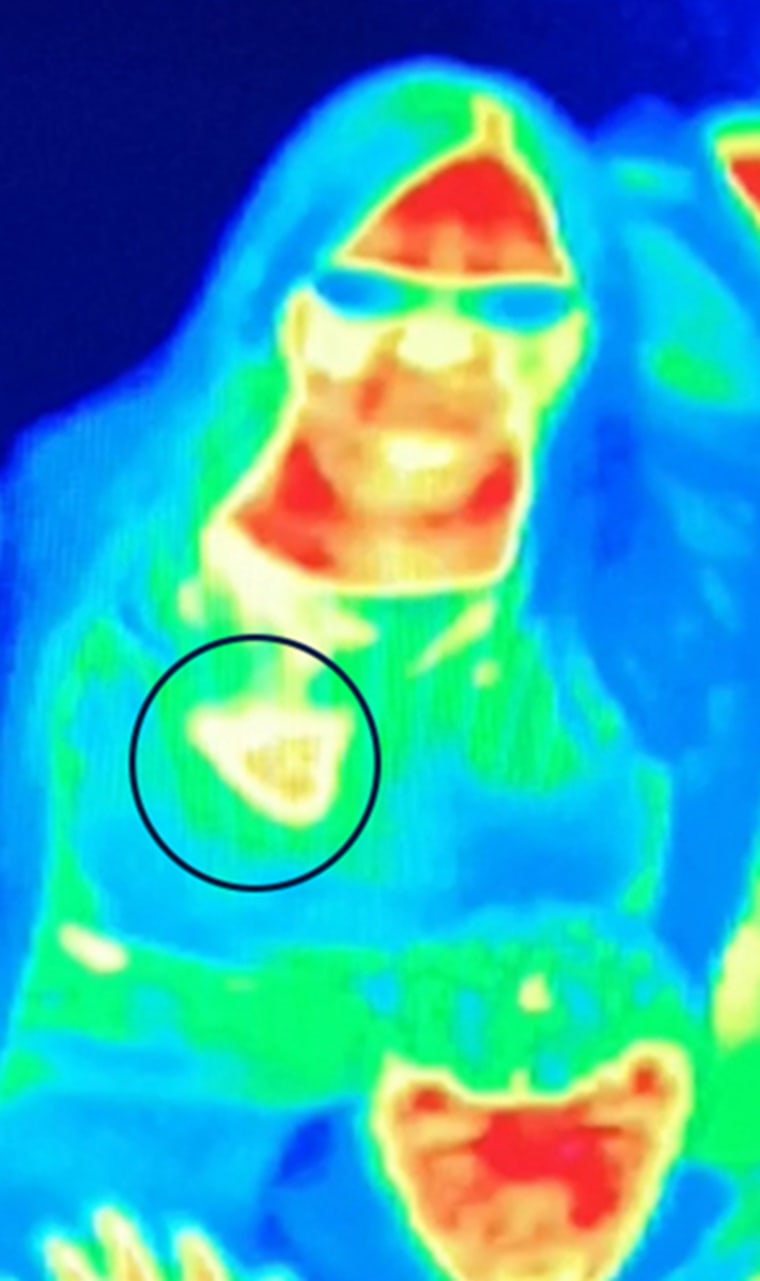An English woman left a tourist attraction in Scotland with a rather unusual souvenir: a thermal image of her body showing a suspicious colored patch in her breast area.
Bal Gill, 41, of Berkshire, England, had stopped by Camera Obscura & World of Illusions in Edinburgh, Scotland, during a family vacation in May. When she reached the thermal imagery camera room, one of the tourist attraction's popular features, she and her family went in and began waving their arms and looking at their images, according to a statement from Gill that was posted on Camera Obscura's website.
Gill quickly noticed the coloration, which indicates heat, in her left breast and snapped a picture of her thermal image.

"We thought it was odd, and having looked at everyone else they didn’t have the same," Gill said in the statement.
When Gill was flipping through her vacation photos after returning home, she stumbled upon the picture again. After some online research on thermal imaging, Gill made a doctor's appointment, where she was ultimately diagnosed with breast cancer.
"I just wanted to say thank you: Without that camera, I would never have known," Gill said in her statement. "I know it’s not the intention of the camera but for me, it really was a life-changing visit. I cannot tell you enough about how my visit to the Camera Obscura changed my life.”
Gill said that the disease is in "really early stages" and that he has had two operations, with another one coming up, to prevent the spread of the cancer.
Gill's case is lucky and remarkable, but women should not forgo mammograms for thermal images, says Dr. Rachel Brem, a radiology professor and the director of breast imaging and intervention at the George Washington University Medical Center.
"We have a technology that is tried and true in saving women from breast cancer, and thermography is not that technology," Brem told NBC News. "Mammography is the only imaging modality that has demonstrated an unequivocal and remarkable reduction in the death rate of breast cancer."
While mammography uses low-energy X-rays to detect breast cancer, thermography only uses heat and light, making its results far less reliable.
"We have to practice research-based and data-based medicine, and there is no data for thermography," Brem said. "You have to keep perspective. It’s one [case]. How many cancers does infrared miss? The answer is we don’t know."
The U.S. Food and Drug Administration has also warned that thermal images should not be used as a substitute for mammograms in breast cancer screening and diagnosis.
"There is no valid scientific data to demonstrate that thermography devices, when used on their own or with another diagnostic test, are an effective screening tool for any medical condition including the early detection of breast cancer or other diseases and health conditions," according to a warning issued by the agency in February.
"People who choose thermography instead of mammograms may miss the chance to detect cancer at its earliest and most treatable stages," according to the FDA website.
The warning states that mammography is "the most effective breast cancer screening method and the only method proven to increase the chance of survival through earlier detection."